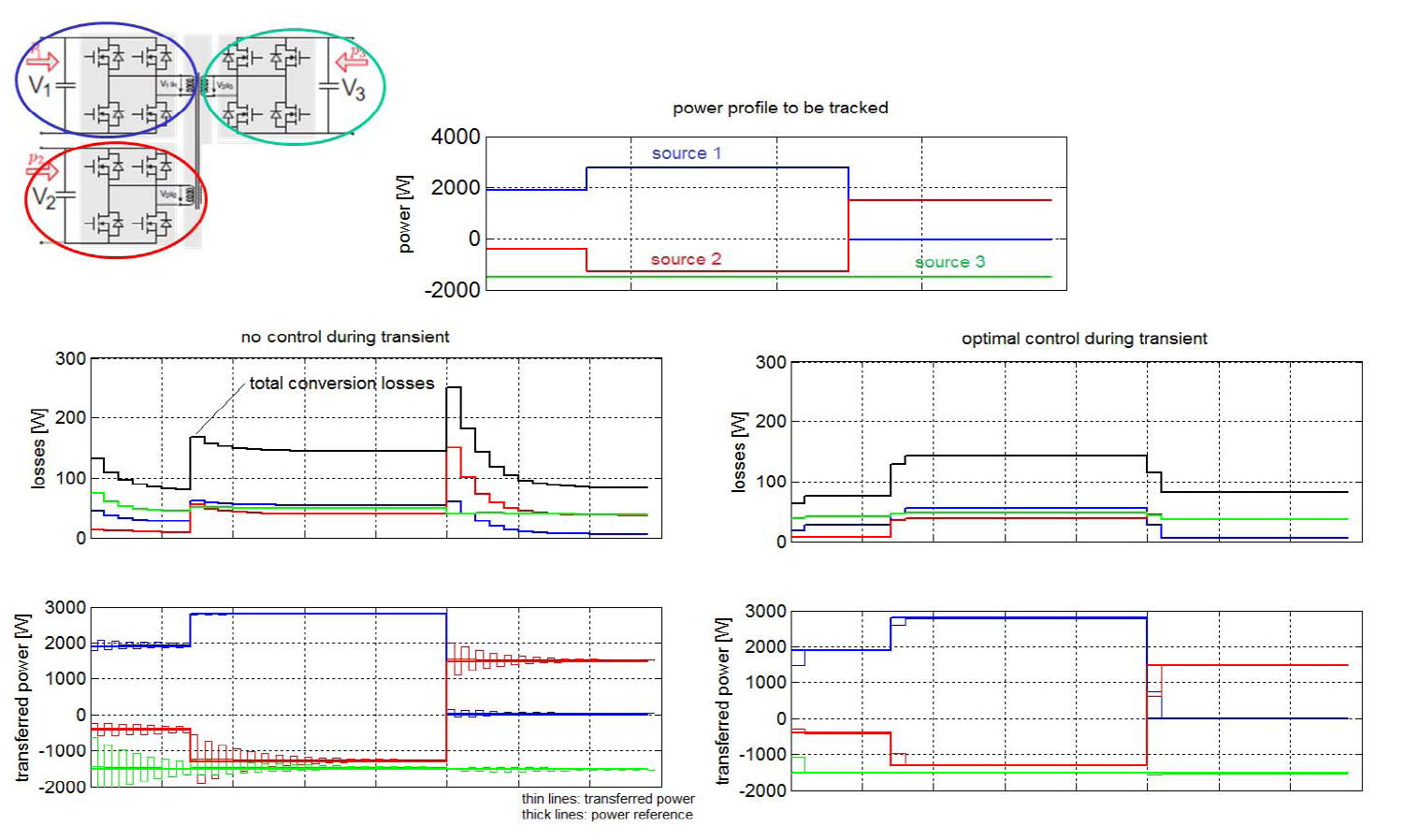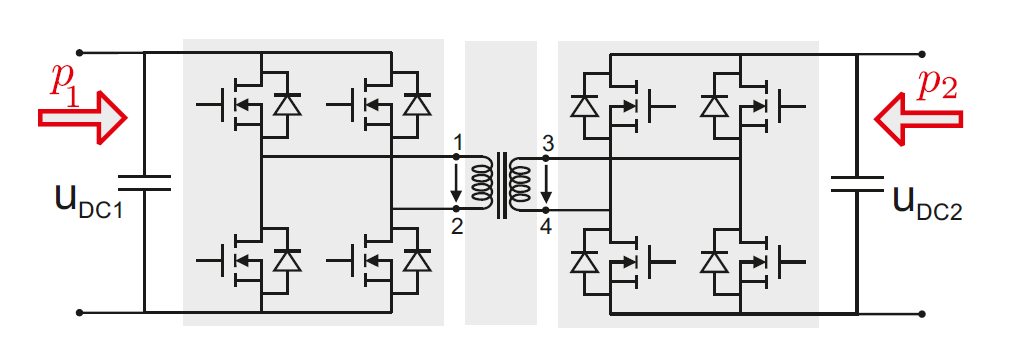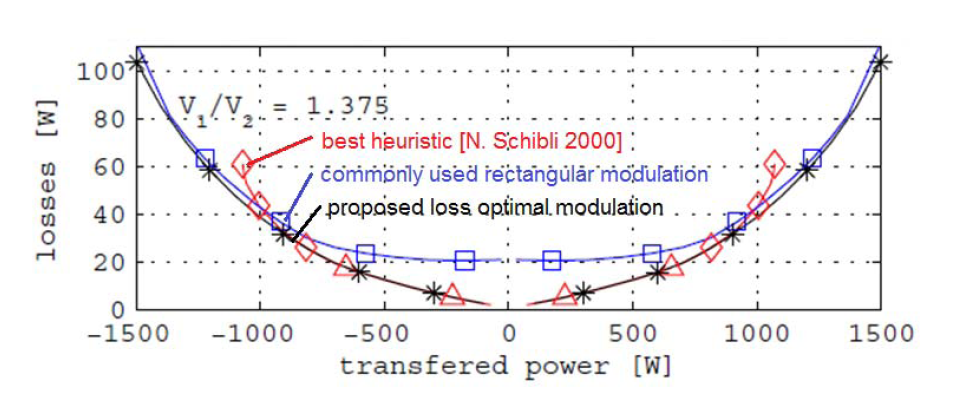Optimisation of Power Converter Efficiency
Power conversion is always subject to losses. In switched mode power converters, conversion losses are caused by resitive components (conduction losses), inductive components (magnetic losses), and switches (switching losses). Minimising these losses through optimal converter design or optimal converter control is subject to ongoing research.
Control-based optimisation
Control-based approaches to minimising losses in switched mode power electronics converters require accurate mathematical models of the converter operation. Current research focuses on a general way of modelling a wide class of power converters, that allows for the formulation of tractable optimisation problems that yield loss-optimal converter operation.
Conversion losses are connected to the switched behaviour of the system, which is incorporated in the investigated system model. This results in mixed integer quadratic programs, i.e. optisation problems that have both, binary and continuous variables. Such problems are generally too complex to be solved online on a control platform at a control rate of several kHz. Therefore, research focuses on offline precomputation of optimal control patterns, and a look-up-table based online implementation of the resulting control scheme. A case study of the applicability of the scheme has been conducted for a multisource converter. It was shown that with the proposed optimisation scheme the converter losses could be reduced and the range of operation could be increased compared to other control schemes for this topology.
Further research investigated optimal transitions between the precomputed steady state optimal control patterns. The resulting control scheme was verified in simulation for a three-source converter. Improved dynamic performance at rapid changes in power reference, and a significant reduction of losses in the presence of fast transients was achieved.


